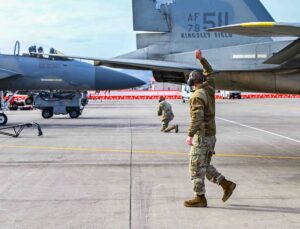
The House version of the fiscal 2023 National Defense Authorization bill requires the U.S. Air Force to divulge its plans for the fleet of Boeing [BA] F-15 fighters before retiring any more F-15Cs/Ds. The proposal came in an amendment by Rep. Cliff Bentz (R-Ore.), which passed the House July 14 on a voice vote as part of an "en bloc" package of amendments. "Unfortunately, the United States Air Force is not telling Congress - or anyone, for that matter -…














